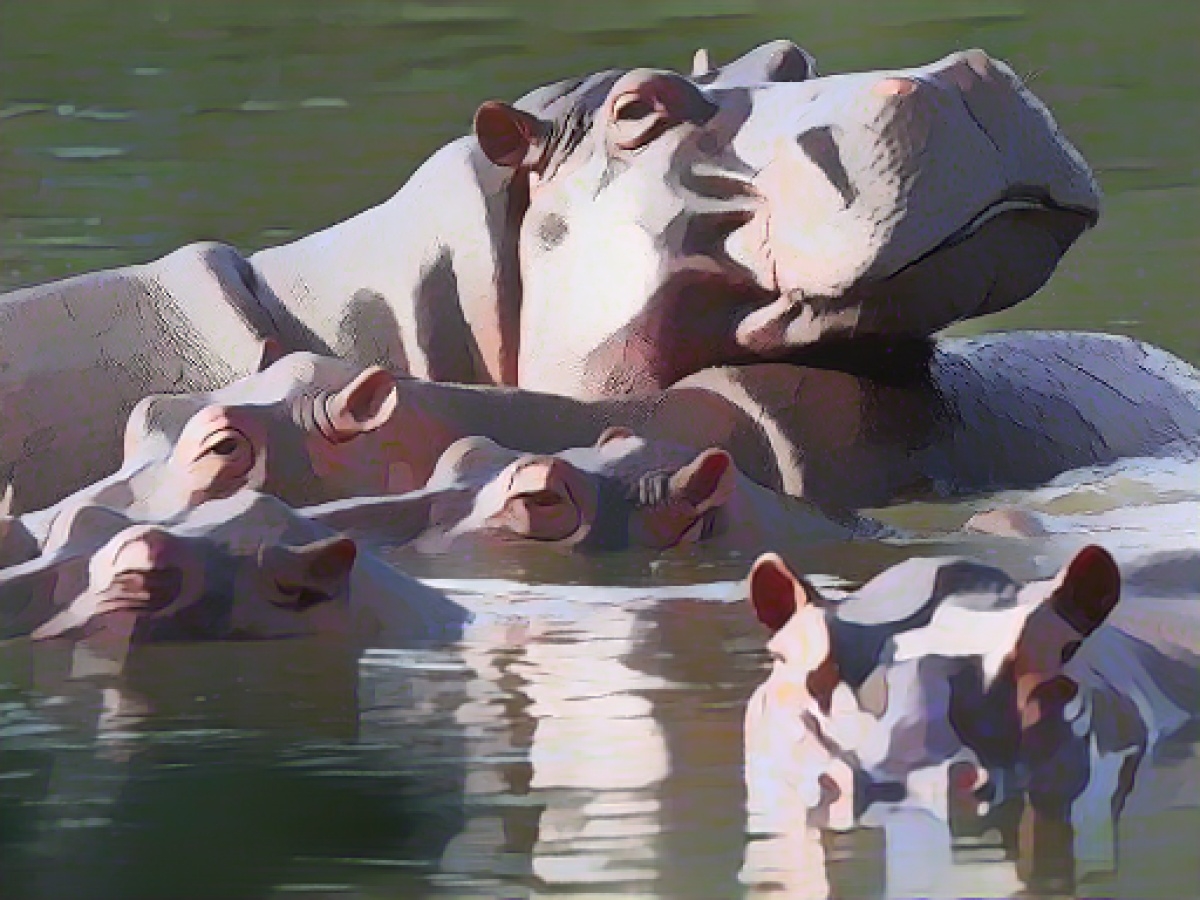Escobar's legacy: Colombia's fight against the hippos
Drug baron Pablo Escobar once brought four African hippos to Colombia for his private zoo - in the meantime, the animals, which weigh several tons, have become a real plague in the South American country. The hippos are disrupting the ecosystem, destroying fields and endangering local residents. Now the hippos are to be sterilized in order to at least stop the further spread of the invasive species.
"Surgical sterilization is just one of the three measures envisaged by the Ministry of the Environment as part of the plan to manage and control hippos in Colombia," said Colombian Environment Minister Susana Muhamad at the presentation of the plan. Further steps include euthanizing and relocating the animals.
Hippos threaten Colombia's ecosystem
In the 1980s, drug baron Pablo Escobar brought four African hippos to Colombia to live alongside elephants, giraffes, kangaroos and other exotic animals in his private zoo on the luxury estate Hacienda Napolés, around 190 kilometers from Medellín. When Escobar was shot dead by security forces in 1993, the hippos were left to fend for themselves.
Over the past 30 years, the original four animals have proliferated and spread. More than 160 specimens are said to currently live around the Rio Magdalena. There is sufficient food and water for the hippos in the South American country. The climate suits them and there are no natural enemies. If no strict measures are taken, the population could grow to 1000 animals by 2035, warned the Minister. This would threaten the original diversity of species.
This is because the hippos can pollute the soil and water, unbalance the ecosystem and endanger local residents. Many people have become accustomed to the animals and even use them for tourism. Nevertheless, the risk of attack remains. "You have to be very careful," says biologist David Echeverri from the Cornare regional environmental office. Even if they appear to be a calm species, they are actually unpredictable. With their weight, they can even capsize boats.
Sterilization alone is not enough
One way to curb their spread will be sterilization, even if it is a "complex and costly process" according to the Ministry of the Environment. "There is a risk that the animals will die, that they will have an allergic reaction to the anaesthetic or that the human team on site will be endangered," said the Environment Minister. Sterilizing a hippopotamus costs an average of 40 million pesos (around 9,000 euros). The government plans to sterilize 20 animals by the end of the year - and 40 per year thereafter.
But sterilization alone will not be enough as a strategy. That is why relocations are also part of the plan. Talks are currently being held with Mexico, India and the Philippines. India has already offered to take in 60 animals. In addition, a plan is to be drawn up as to how the animals can be euthanized under moral aspects - the Ministry of the Environment is working on a so-called ethical euthanasia protocol for this purpose. The minister has not yet provided any details.
Solutions from the past
In the past, there have already been various attempts to bring the population under control. "There is not one measure that would be effective enough to guarantee that they stop reproducing," says Echeverri. Simply shooting the animals, which researchers have already recommended, is out of the question for the state of Antioquia and other animal-loving Colombians. When "Pepe", a stray hippopotamus, was shot on the orders of the Ministry of the Environment in 2009 and soldiers posed with the shot animal, there was great outrage in Colombia.
Sending the hippos to Africa could do more harm than good. "When we move animals or plants from one place to another, we also transport their pathogens, bacteria and viruses," says biology professor María Ángela Echeverry from Javeriana University in Bogotá. "We could bring new diseases to Africa."
"Race against time"
The country has been waiting a long time for a plan to tackle this problem. "None of the three measures is effective on its own, but it is important that they are implemented simultaneously," said the Environment Minister. "We are in a race against time here."
- Despite initial intentions, Pablo Escobar's introduction of hippos to Colombia in the 1980s has evolved into a significant threat to the local ecosystem and wildlife, as the animal population has grown exponentially and their aggressive nature poses risks to both the environment and local residents.
- With the help of international collaborations, such as with Mexico, India, and the Philippines, the Colombian government plans to relocate some of the hippos, in addition to sterilizing and euthanizing others, as a multi-faceted approach to reducing their population size and mitigating their negative impact on nature conservation efforts in the region.
Source: www.dpa.com








